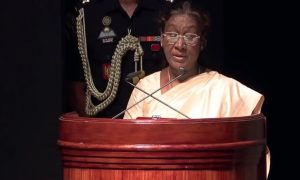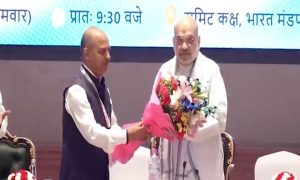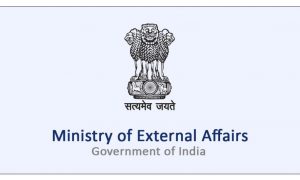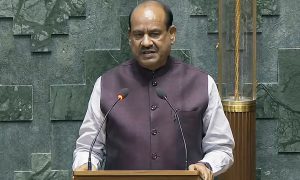There has been considerable ruffle of feathers in the last few days with regard to the proposed EIA 2020 act, some questioning to scrapping the same with or without valid reasoning while many are perplexed whether it is beneficial or detrimental. While most of the arguments take a political colour either for or against, the general public and social activists should know some basic aspects while doing the same, and leave it to the experts to bring it forward by representations with valid arguments of specific points that require the government and policy makers to turn their attention. This article carries tries to convey the neutral perspective. It has to be noted that EIA report alone does not empower any agency to commence commercial operations of a project and the project has to get CRZ demarcation, clearance from local pollution control board, collector, highways, maritime board, Minor irrigation department, etc as the case may be. Attempts to make single window clearance for projects is slightly improved with the EIA 2020 modifications, despite the other local bodies cited above. Depending on the size and nature of the project many clearances can be done at the State Government level.
Environmental Impact Assessment (EIA) basic definition– “a process of evaluating the likely environmental impacts of a proposed project or development, taking into account inter-related socio-economic, cultural, and human-health impacts, both beneficial and adverse”
The significance of EIA: EIA is more than technical reports, it is a means to a larger intention – the protection and improvement of the environmental quality of life. 2) EIA is a procedure to identify and evaluate the effects of activities (mainly human) on the environment – natural and social and prepare a guideline for the policy makers and legal experts to make or amend the law.
History of EIA in India
The Indian experience with Environmental Impact Assessment began around 1976-77 when the Planning Commission asked the Department of Science and Technology to examine the river-valley projects from an environmental angle. This was subsequently extended to cover those projects, which required the approval of the Public Investment Board. Till 1994, environmental clearance from the Central Government was an administrative decision and lacked legislative support.
On 27 January 1994, the Union Ministry of Environment and Forests (MEF), Government of India, under the Environmental (Protection) Act 1986, promulgated an EIA notification making Environmental Clearance (EC) mandatory for expansion or modernisation of any activity or for setting up new projects listed in Schedule 1 of the notification. Since then there have been 12 amendments made in the EIA notification of 1994.
The MoEf further made new EIA legislation in September 2006. The notification makes it mandatory for various projects such as mining, thermal power plants, river valley, infrastructure (road, highway, ports, harbours, and airports) and industries including very small electroplating or foundry units to get environment clearance. However, unlike the EIA Notification of 1994, the new legislation has put the onus of clearing projects on the state government depending on the size/capacity of the project.
Certain activities permissible under the Coastal Regulation Zone Act, 1991 also require similar clearance. Additionally, donor agencies operating in India like the World Bank and the ADB have a different set of requirements for giving environmental clearance to projects that are funded by them.
Under the Environment (Protection) Act, 1986, India notified its first EIA norms in 1994, setting in place a legal framework for regulating activities that access, utilise, and affect (pollute) natural resources. … The 1994 EIA notification was replaced with a modified draft in 2006
Environmental assessments were classified into four types i.e., strategic. the project level, when major alternatives were still open. Development planning for a geographic region, normally at the sub-country level were initiated in November 2014
EIA is now mandatory for more than 30 categories of projects, and these projects get Environmental Clearance (EC) only after the EIA requirements are fulfilled. Environmental clearance or the ‘go ahead’ signal is granted by the Impact Assessment Agency in the Ministry of Environment and Forests, Government of India from May 2019.
Before we go into the difference of what is new in EIA 2020 let us have a relook at the process:
The EIA process
The stages of an EIA process will depend upon the requirements of the country or donor. However, most EIA processes have a common structure and the application of the main stages is a basic standard of good practice.
The environment impact assessment consists of eight steps with each step equally important in determining the overall performance of the project. Typically, the EIA process begins with screening to ensure time and resources are directed at the proposals that matter environmentally and ends with some form of follow up on the implementation of the decisions and actions taken as a result of an EIA report. The eight steps of the EIA process are presented in brief below:
- Screening: First stage of EIA, which determines whether the proposed project, requires an EIA and if it does, then the level of assessment required.
- Scoping: This stage identifies the key issues and impacts that should be further investigated. This stage also defines the boundary and time limit of the study.
- Impact analysis: This stage of EIA identifies and predicts the likely environmental and social impact of the proposed project and evaluates the significance.
- Mitigation: This step in EIA recommends the actions to reduce and avoid the potential adverse environmental consequences of development activities.
- Reporting: This stage presents the result of EIA in a form of a report to the decision-making body and other interested parties.
- Review of EIA: It examines the adequacy and effectiveness of the EIA report and provides the information necessary for decision-making.
- Decision-making: It decides whether the project is rejected, approved or needs further change.
- Post monitoring: This stage comes into play once the project is commissioned. It checks to ensure that the impacts of the project do not exceed the legal standards and implementation of the mitigation measures are in the manner as described in the EIA report. This comprises of two aspects of reporting which has greatly gained significance for the last 10 years namely, the ESMP (Environmental Social Management Impact Assessment Plan) & EMP (Environmental management Plan ) which forms the vital monitoring process form the States by the local body, empowering the State bodies.
- Figure 1: Generalised process flow sheet of the EIA process
.

The approach methodology of EIA in developed countries and in India is as under till the proposed latest amendments stands almost unchanged or with very minor monitoring procedural changes :
| Developed countries | EIA in developing countries | EIA in India |
| Well-framed EIA legislation in place. For instance, in Canada, Canadian Environmental Assessment Act regulates EIA while EU countries are guided by Directive on EIA (1985). | Lack of formal EIA legislation in many developing countries. For instance, EIA is not mandatory in many African countries | Formal legislation for EIA. It has been enacted by making an amendment in the Environment Protection Act 1986. |
| In developed countries, active involvement of all participants including competent authority, government agencies and affected people at early stages of the EIA. This makes the process more robust and gives a fair idea of issues, which need to be addressed in the initial phase of EIA. | Limited involvement of public and government agencies in the initial phases. This often results in poor representation of the issues and impacts in the report, adversely affecting the quality of the report. | Limited involvement of public and government agencies in the initial phases. |
| Integrated approach to EIA followed. All aspects including social and health taken into account. | Mainly environmental aspects considered. Poor on social or health aspects. | No provision in place to cover landscape and visual impacts in the Indian EIA regulations, and an extent of green cover is however stated approximately. However, it is done as a topographic survey prior to applying for a EC (Environmental Clearance) the final stage to kick start a project. |
| Proper consideration of alternatives in EIA | The consideration of alternatives in developing countries is more or less absent. | It was the same till 10 years ago as developing countries but the project owner identifies alternatives at the EIA stage itself to minimize time delay for clearance from the expert committee. |
| The process of screening is well defined. For instance, in EU countries competent authorities decide whether EIA is required after seeking advice from developer, NGO and statutory consultees. In Japan, screening decision is made by the authorizing agency with respect to certain criteria. In Canada, federal authority determines whether an environmental assessment is required or not. | In developing countries, screening practice in EIA is weak. In most cases, there is a list of activities that require EIA but without any threshold values. | Screening done on the basis of a defined list. Threshold values on the size of the project has been used to decide whether the project will be cleared by the state government or the central government. |
| Scoping process is comprehensive and involves consultation with all the stakeholders. In many countries like US, Netherlands, Canada and Europe, the involvement of the public and their concern are addressed in the scoping exercise. Besides this, funding organisations such as World Bank, ADB and ERDB have provision for consultation with the affected people and NGOs during identification of issues in scoping exercise. | Scoping process in most developing countries is very poorly defined. In many countries including China, Pakistan, etc. there is no provision for scoping. In some countries like in Nigeria and Indonesia, a term of reference is followed for scoping while in some countries like Ghana, Taiwan and Chile, a general checklist is followed. In countries where it is undertaken, there is no public consultation during scoping. Moreover, in most developing countries, scoping is often directed towards meeting pollution control requirements, rather than addressing the full range of potential environmental impacts from a proposed development. | Earlier scoping was done by consultant or proponent with an inclination towards meeting pollution control requirements, rather than addressing the full range of potential environmental impacts from a proposed development. However, the new notification has put the onus of scoping on the expert committee based on the information provided by the proponent. Consultation with public is optional and depends on the discretion of the expert committee. |
| Most reports in local language | Most reports in English and not in the local language. | Most reports in English and not in the local language. In some case, executive summary is translated into local language. |
| A multi-disciplinary approach. Involvement of expert with expertise in different areas. | Lack of trained EIA professionals often leads to the preparation of inadequate and irrelevant EIA reports in developing countries | Preparation of EIA is done by consultants. The selection criterion for the organisation is fees/cost is left to the agency wanting to carry out EIA. However, they have to be approved agencies by Government of India. |
| Two tier of EIA review, one conducted after the completion of EIA to check the adequacy and effectiveness of EIA and the second done before decision-making. | Poor review or monitoring. | In India too, EIA review although not up to the mark when compared to developed countries is been considerably improving since due to insistence from ADB/WB funding agencies, as well as insistence from technology providers of overseas developed countries for the project owner has an FDI. The review agency called Impact Assessment Agency (IAA) about a decade backed lacked inter-disciplinary capacity. No representation of NGO in IAA, notification till today so far but they are motivated to attend public hearings at various phase of the project right from conceptualization stage to implementation stage. |
| Expertise in EIA: The International Association for Impact Assessment (AIA) and other organisations demonstrate that there are a large number of individuals with the capability to design, conduct, review and evaluate EIAs from countries of the North. The major portion of teaching about environmental assessment also takes place in industrial countries. | The expertise in EIA is slowly developing. In most cases, students from the developing countries go to the developed countries to gain knowledge of the subject. | Expertise in this area is showing continued development in the last 10 years. |
| Source: Compiled by Industry & Environment Unit, Centre for Science & Environment, 2006 & status quo prevails as of 2020 till now. |
What’s exempted & New in EIA 2020.
All inland waterways projects and expansion/widening of national highways — two focus areas of the government and championed by Shri. Nitin Gadkari, the minister in charge of the sectors concerned — will be exempt from prior clearance. These include roads that cut through forests and dredging of major rivers.
The 2020 draft also exempts most building construction projects of built-up area up to 1,50,000 sq. m. This is a reiteration of the Environment Ministry’s December 2016 notification that was set aside by the National Green Tribunal in December 2017. The government subsequently moved the Supreme Court but is yet to get a green signal and the matter is under judicial review.
The big shift
The two most significant changes in the new draft are the provisions for post-facto project clearance and abandoning the public trust doctrine. Projects operating in violation of the Environment Act will now be able to apply for clearance with modifications to ESMP and EMP (Environmental Social Impact Management Plan & Environmental Management Plan).
All a violator will need are two plans for remediation and resource augmentation corresponding to 1.5-2 times “the ecological damage assessed, and economic benefit derived due to violation”. For such late applications, a developer will have to cough up Rs 2,000-10,000 per day for the period of delay. Consider the impact of this penalty on, say, an illegal sand miner who takes out several truckloads every day.
In an order on April 1, the Supreme Court held “ex post facto environmental clearances” contrary to law. It said: “Environment law cannot countenance the notion of an ex post facto clearance. This would be contrary to both the precautionary principle as well as the need for sustainable development.”
The 2020 draft also spells out how the government will take cognisance of such violations. It must be reported either by a government authority or the developers themselves.
Legal question
A EIA notification is issued under Section 3 of the Environment Protection Act, 1986, to impose restrictions on setting up new projects or expansion or modernisation of existing projects. The section stipulates that such measures must benefit the environment.
In the April 1 order, the Supreme Court also said: “For an action of the Central government to be treated as a measure referable to Section 3, it must satisfy the statutory requirement of being necessary or expedient for the purpose of protecting and improving the quality of the environment and preventing, controlling and abating environment pollution”.
The Ministry of Environment, Forests and Climate Change released its latest draft Environment Impact Assessment (EIA) notification 2020 recently. The notification determines a crucial aspect around legal procedures for environmental planning in India. The Ministry sought comments from the public on this draft within sixty days from the date of issuance of the notification. The concerned experts are requested to apply to the ministry of their concerns and objections.
Furnished here below is a format draft letter that can be prepared by XXXX urging the Ministry to withdraw the notification and defer the process of public comments in the light of the COVID-2019 pandemic
Sample Letter:
XXXX
Secretary Ministry of Environment, Forests and Climate Change
Indira Paravian Bhawan
Jor Bagh, New Delhi
Email: [email protected]
Subject: Withdraw the draft EIA notification, 2020 [F.N.2-50/2018/IA.III] and defer the process of public comments in the light of the Covid-2019 pandemic
Dear Mr…… 25/03/2020
This is with reference to the draft EIA notification, 2020 which has been uploaded on the environment ministry’s website on 12.3.2020 seeking public comments within sixty days of the issuance of the notification. We are deeply concerned that this draft notification has been put out in the midst of a national health crisis. As you are aware, most of the country is under lockdown and there are severe restrictions on movement in public places. Most offices are closed, and the staff are working from home. These restrictions may be indefinite, and it is not clear when public life and work can resume.
The long-term public health, social and economic impacts of this global pandemic are yet to be ascertained. The EIA notification is an important regulation through which the impacts of land-use change, water extraction, tree felling, pollution, waste, and effluent management for industrial and infrastructure projects are to be studied and used in developmental decision making. Any change in this law has a direct bearing on the living and working conditions of people and the ecology.
Therefore, it is critical that the government provides a suitable and adequate opportunity for those impacted or likely to be affected by the design and implementation of EIA notification. Opportunities to understand and discuss the implications of the proposed amendments may be severely hindered due to the present health emergency with restricted public movement, social distancing, and challenges to everyday life activities. These restrictions also make it impossible to disseminate information about the notification to communities who deserve to know and influence the notification.
We, therefore, request the environment ministry to:
1. Immediately, defer the proposed amendments of the Draft EIA notification 2020.
2. Consider reissuing the draft only after health conditions related to Covid19 and civic life is normalized across the country.
3. Ensure that there are widespread and informed public discussions on the implication of these amendments.
4. A full disclosure of the nature of comments received and the reasons for acceptance and rejection of these comments, prior to the issuance of the final amendments.
We do hope that the environment ministry will uphold its obligations towards informed public participation like the commitment to Principle 10 of the Rio Declaration and also the Principles of Natural Justice, while taking a considered view on the proposed amendments to the EIA notification, 2020.
Sincerely,
XYZConclusion: Instead of making hashtag tweets on twitter as a key board warrior general public and social activists are to ask specific pertinent questions as amendments to EIA 2020 is possible as it is on the draft stage with start questions through your MP’s or MLA’s and make them accountable by helping them to ask pertinent questions and just not protest marches, as the expert committee in India is always knowledgeable but will not accede demands are met by protests without reasonable & valid claims. Understand the fact that amendments and changes have happened for EIA in the history cited with the current ruling and opposition parties. It has never been scrapped earlier but has underwent amendments and will also undergo amendments now, but not scrapped. Remember value additions would be welcomed by all governments ruled by democracy but not asking the pertinent questions and asking irrelevant questions will not yield desired results.

About Author

Mr. Kumar Sarangapani, Managing Partner Varaha Pipeline Engineering & Business Solutions LLP & Marine Specialist Project Consultant (RO) for community plants developed by Government Projects in Tamilnadu, Andra Pradesh, Maharashtra & Gujarat.
Kumar is”chemical engineer with about 40 years of experience.
Twitter- KumarSarangapa1




























 WhatsApp us
WhatsApp us